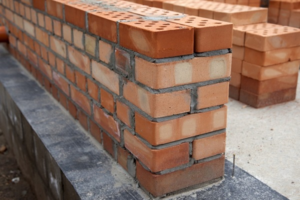Every home, business, and workplace needs electrical systems to function. Electrician Midland installs, repairs, and maintains those systems.

This career path is ideal for those who are detail-oriented and enjoy the tangible results of their work. Electrical infrastructure is constantly evolving, and electricians must stay abreast of new technology. Some also specialize in particular types of job sites or projects.
Electricians install, repair and maintain electrical wiring and equipment to power appliances, lights, machines and other devices. They troubleshoot and diagnose problems to ensure safe, reliable operation. They also follow local, state and national electrical codes to prevent fires, electrocution, injuries and property damage. Electricians often collaborate with other construction specialists, such as plumbers and HVAC installers to design electrical systems for new projects or structural upgrades. They must also communicate effectively to resolve issues and ensure compliance with building regulations.
Typical job duties include reading blueprints, identifying the location of circuits and outlets, and using different types of hand tools and power tools, such as conduit benders. They also use specialized tools like thermal scanners and cable testers to locate issues and determine the cause of power interruptions or other malfunctions. Some electricians may also perform administrative functions, such as preparing records and reports or ordering supplies or equipment.
The job can be physically demanding and dangerous, depending on the specialization. Electricians may work in cramped spaces or on roofs and other elevated areas, and may be exposed to dust, dirt and other hazardous materials. They also need to be comfortable working in high-stress situations, such as during emergency repairs or disaster relief efforts.
Some electricians specialize in specific fields, such as commercial writing systems or powerline transmission and distribution. Others focus on residential and commercial electrical services, while still others specialize in telecommunications or energy management. These additional skills help them stay up-to-date on industry trends and developments, such as the rising popularity of renewable energy sources that require specialized equipment to install and maintain.
In addition to installing, maintaining and repairing electrical equipment, electricians must keep up with yearly modifications to electrical codes. This is important to avoid costly disruptions to power and reduce the risk of fire hazards. They must also remain up-to-date on safety protocols, as they are responsible for grounding systems and ensuring that wiring meets strict standards to prevent fires and other accidents. They may also need to provide guidance or training on electricity usage and safety precautions to clients or end-users, depending on the specific role.
Education and Training Requirements
The career of an Electrician is one that requires on-the-job training as well as classroom instruction. Trade schools offer programs that teach electricians the technical aspects of their job, such as how to read blueprints, circuit diagrams, and other important documents. They also learn how to use tools and equipment like power saws, screwdrivers, wire strippers, and drills. Electricians must also understand safety protocols when working on electrical systems.
After completing an apprenticeship program or earning an associate degree, electricians must pass a series of exams to earn their license.
Those who are interested in advancing their careers may find it helpful to take continuing education courses that teach them about the latest changes in electrical codes and the introduction of new types of technology. In addition, a licensed Electrician should also strive to keep up with the work of other electricians in their field by reading trade publications and collaborating with other construction specialists, such as HVAC workers and elevator installers.
In some cases, electricians may decide to start their own businesses. This is a challenging and rewarding option that can provide more control over their work and personal life. Those who choose to go this route must be willing to invest time and money into their business, as well as learn how to manage finances and marketing.
Electricians are responsible for the installation, repair, and maintenance of a variety of different electrical systems and devices. Their work ensures that homes, offices, and industrial facilities have the electricity they need to function. There are several specialized fields within the electrical trade, including commercial and residential electricians, lineman electricians, and master electricians. Each of these electricians brings a unique set of skills and expertise to their work, but all contribute to the safe and efficient distribution of electrical energy. Electricians are the unsung heroes of our modern world, and their hard work is integral to keeping our infrastructure running smoothly.
Working Conditions
Depending on their specialization, Electricians work in diverse environments such as residential homes, office buildings, power plants and manufacturing facilities. The job can be incredibly physical as electricians often need to climb, lift heavy tools and supplies, and be on their feet for long periods of time. They also must be comfortable working in cramped spaces and on scaffolding, as well as being exposed to dust, debris and fumes. Local or even long-distance travel may also be necessary depending on the worksite.
Many electricians belong to unions such as the International Brotherhood of Electrical Workers, and their union membership can influence the type of work they’ll be assigned to complete. Union members generally have a higher pay scale than those who are not part of a union, and can negotiate with employers for better conditions on the job site.
The training program for becoming a licensed electrician can take between 4-5 years to complete after earning your high school diploma. You can opt for a trade school or an apprenticeship, which provides you with both classroom-based instruction and on-the-job experience. Choosing the right option for you will depend on your preference for learning styles and whether you want to continue your education beyond the apprenticeship level.
Once you’ve completed your apprenticeship, you’ll be eligible to apply to become a journeyperson electrician. Journeypersons are electricians who have taken several hundred hours of classroom training and worked under the supervision of a master electrician for at least three to six years. In addition, you may be required to take a written exam and pass a physical examination to demonstrate your skills.
Whether you’re a journeyperson electrician or an apprentice, it’s important to have excellent communication skills as you interact with customers and supervisors on the job site. You must be able to explain technical issues in easy-to-understand terms so that anyone can understand them. If you’re not a good communicator, you may have trouble getting your point across and could put yourself or others in danger. This is why it’s essential to get proper training and certification before beginning your career as an electrician.
Career Advancement
Electricians are in high demand and are well-positioned to move up the career ladder. They can specialise in niche areas and become masters of their craft. They can also choose to take their skills and knowledge to a new level by running their own electrical business.
The first step for many electricians is completing an apprenticeship. This is a combination of study and on-the-job training that provides the opportunity to learn about the industry and develop the skills necessary for an electrician career path. During the apprenticeship, the student will work under the supervision of an experienced contractor and will be able to build up their portfolio of work and gain valuable experience.
After gaining experience in the field, it is common for an electrician to become licensed as a journeyman electrician. From here, they can work independently and are able to take on jobs that require their expertise. It is possible for an electrician to work on a wide variety of different projects, from installing wiring in homes and commercial buildings to repairing power generators.
Another great option for those who want to move up in the industry is to work as a project supervisor or a facilities manager. This role allows an electrician to supervise other workers and oversee complex construction projects. They can also work on smaller projects that involve installing electrical systems and equipment in offices, hospitals, or schools.
It is also possible for an electrician to move up the ranks by becoming a technical salesperson or trainer. This role involves working with clients to help them choose the right electrical systems and equipment for their home or business. They can also train other electricians and apprentices on the latest electrical technology and best practices.
Electricians have a very important role in the community. They provide critical infrastructure and services that keep people safe and allow them to live their lives. They are the ones who maintain clean water supplies, safeguard indoor air quality, and ensure that our lights stay on. This is why it’s important for those who are interested in a skilled trade to consider the options that are available to them.








